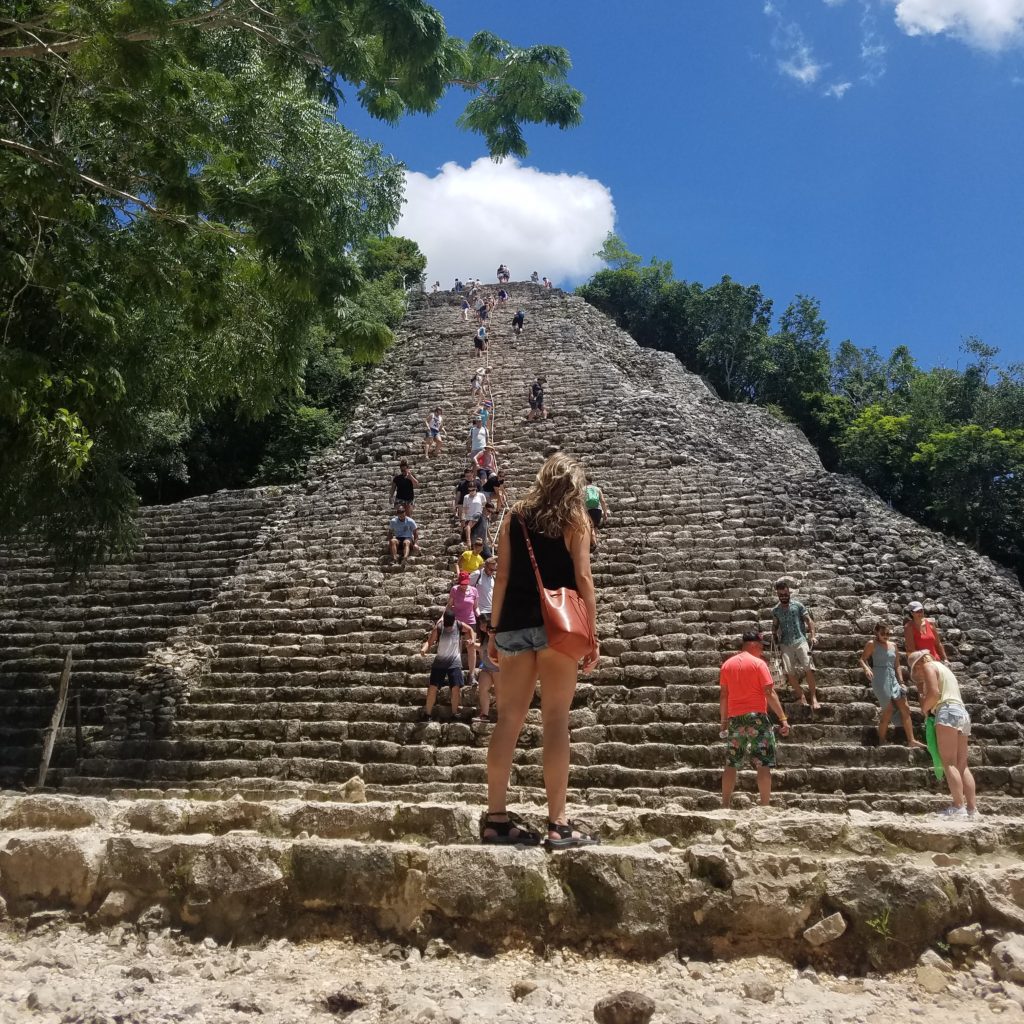Welcome back! Picking up from where we left off…Coba.
The Coba (‘waters stirred by wind’ in Maya) ruins were probably my favorite of these two trips but unlike Tulum you have to make a day trip out of Coba (especially if you don’t have a car and are taking a bus/public transport). We went to the Tulum bus station early in the morning to book our tickets to Coba. We had some time in between the bus leaving and headed to Encanto Cantina to grab a quick breakfast.
Coba is about an hour away by bus ($5 round trip) and situated by two lagoons. Again, I recommend getting one of the first buses to try and beat the crowds! Coba is a little off the beaten path and not as well-known as some of the other Mayan ruins which is a nice contrast to the other more developed Mayan sites. It is also one of the few sites where you can still climb a pyramid using the steps up the front (as opposed to a wooden stairway). The bus drops you about a 5 minute walk from the entrance. It also looks like there is a zip line nearby which might be fun!
The entrance fee is 70 pesos ($3-$4) plus a video fee if you want to take a GoPro in (I took my GoPro in but was not charged – the same for Tulum). Once you enter the park there is a place to rent bikes and it is only about 50 pesos for the day ($2-$3). I would definitely rent a bike; it makes getting around the site a lot quicker and fun! There are also bikes with seats on the back and a driver that you can pay if you don’t feel like cycling yourself! The site is rather large so walking it would take up most of your day.
Coba came into existence around 50-100 A.D but it wasn’t till after that that it saw major growth due to an increase in its social and political status. It was said to have been one of the most powerful cities of its time in the northern Yucatán peninsula. It was around 600 A.D (50,000 inhabitants) and the emergence of Chichen Itza (110km away) that Coba started to see a shift in its power and around 900-1000 A.D. Coba began to lose the power struggle. It was finally abandoned around 1550 when the Spanish conquered the area.
Coba is different from Tulum and some of the other Mayan sites because it is not excavated as much. It still contains many mounds (containing structures) covered by jungle growth. Some estimate as many as 5000 mounds have yet to be found/excavated! It is also not a single site (like Tulum) but rather many sites connected by Mayan ‘white roads’ (sacbéob). One supposedly runs almost to Chichen Itza!


As soon as we entered we rented bikes. It was a lot of fun riding around the many sites instead of walking . You ride up to a site, park your bike, and then go explore the area. Many of the sites will only have a few to no bikes at all parked in front. The only exception to this was the large pyramid.

Many of the ‘white roads’ connect at Nohoch Mul, the main pyramid area. The main pyramid, Ixmoja, is the main highlight of Coba. It is the largest Mayan pyramid in the area and the second largest Mayan pyramid in the world. What’s even better is you can still climb this 42 meter/137 feet tall pyramid. It is 120 steep steps to the top but the view is worth it! Make sure to wear sunscreen because once you start climbing you are under the hot sun with no shade! There is a thick rope in the center to help.
I would recommend holding on to this when you come down. I slipped down the last 5 steps or so because I let go! There have been many rumors that they are going to stop allowing people to climb to the top. I’m not sure if it is true or when that will happen but if you enjoy climbing Mayan ruins make sure to check out this pyramid before that happens!














Dog at the top. 
We checked out the other ruins before leaving the park. A couple of restaurants sit right by the park entrance. We stopped for lunch before getting the bus back. Once back on the bus it was back to Tulum!
Next on the list to explore around Tulum: Cenotes! Stay tuned.
Buffy xx



































